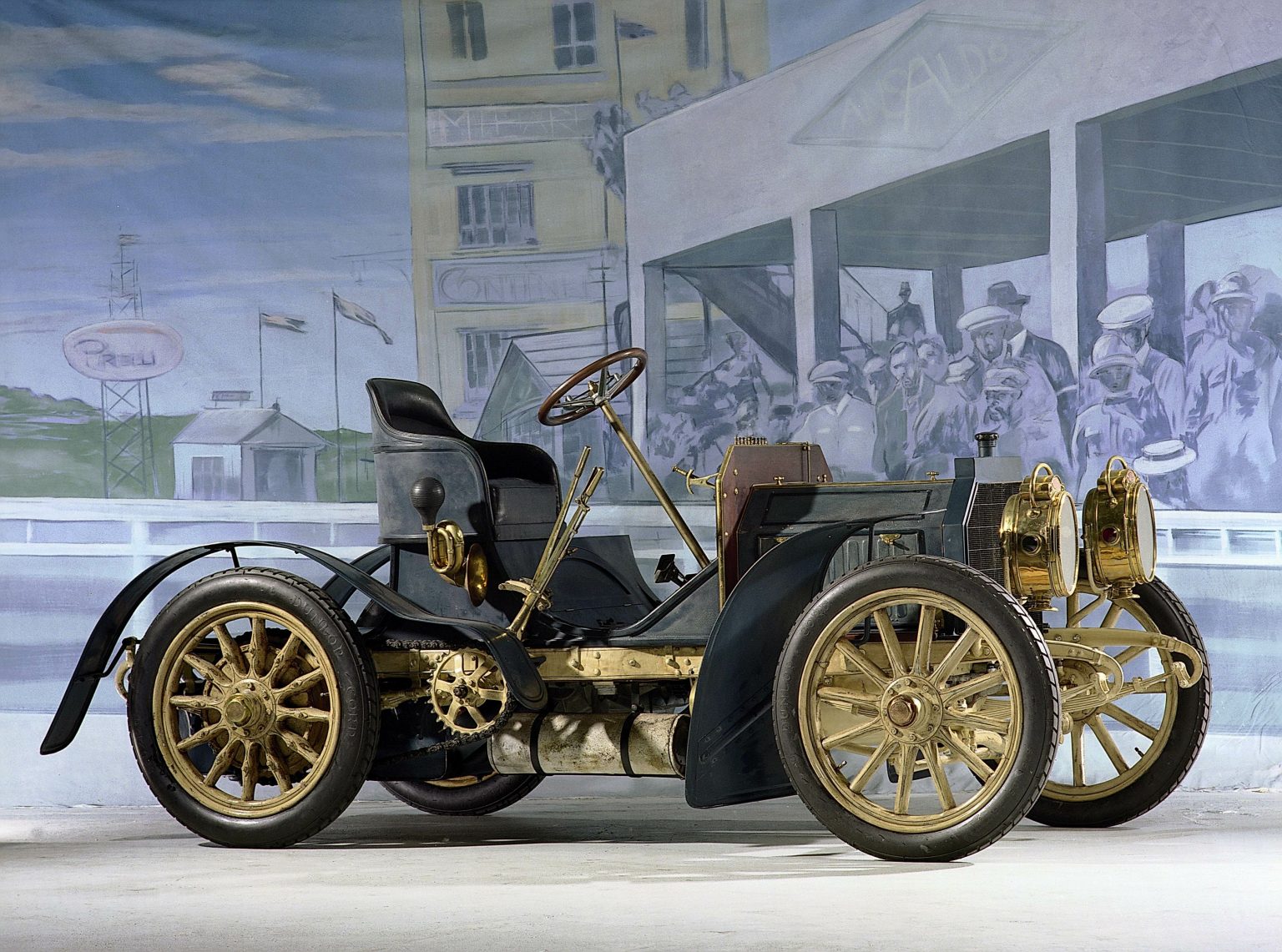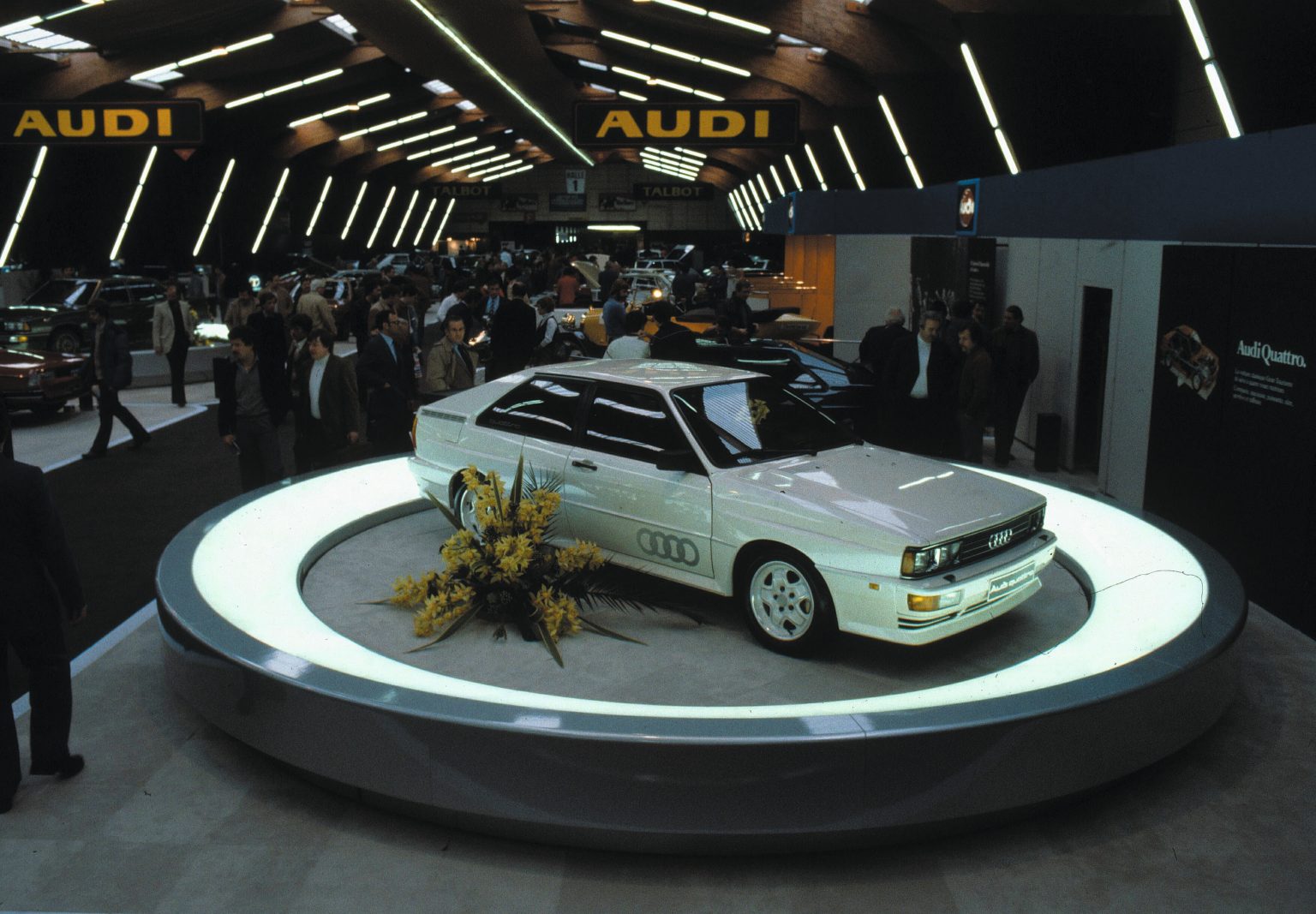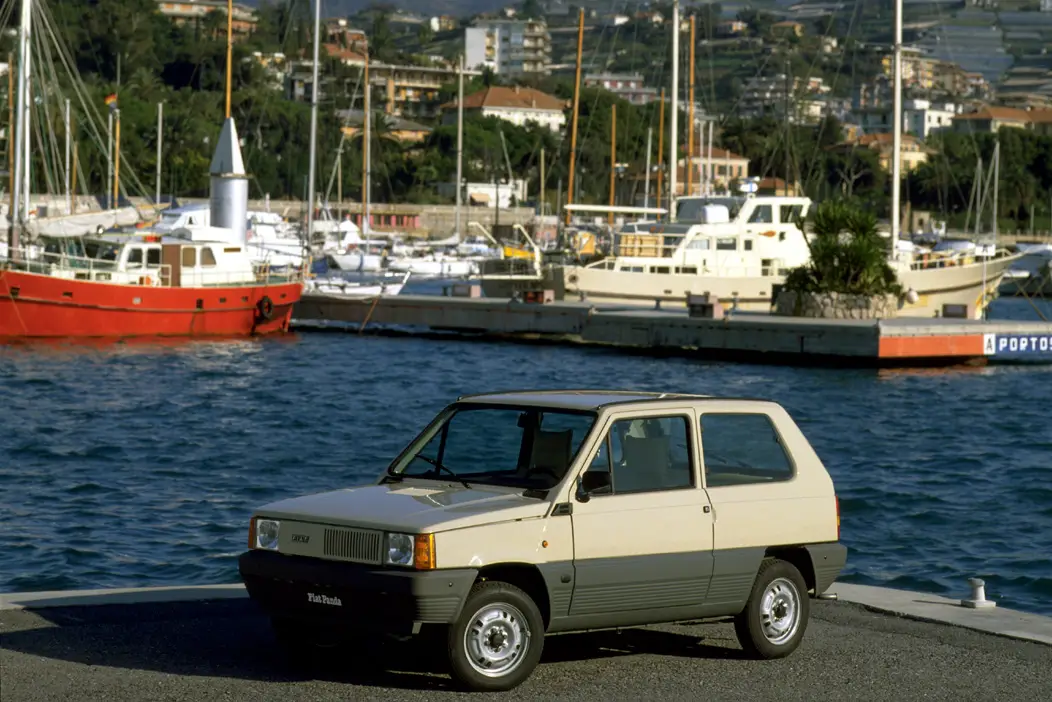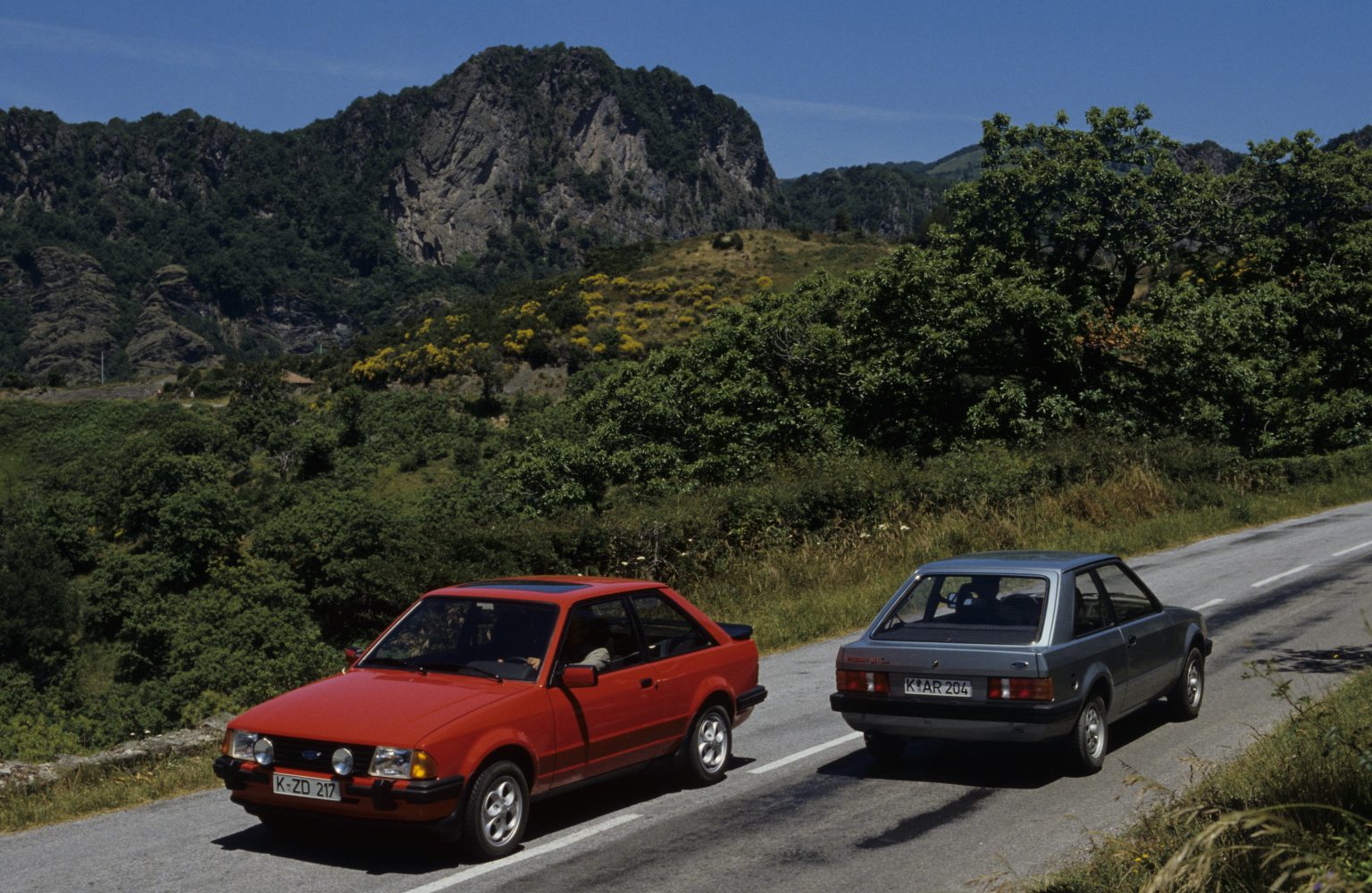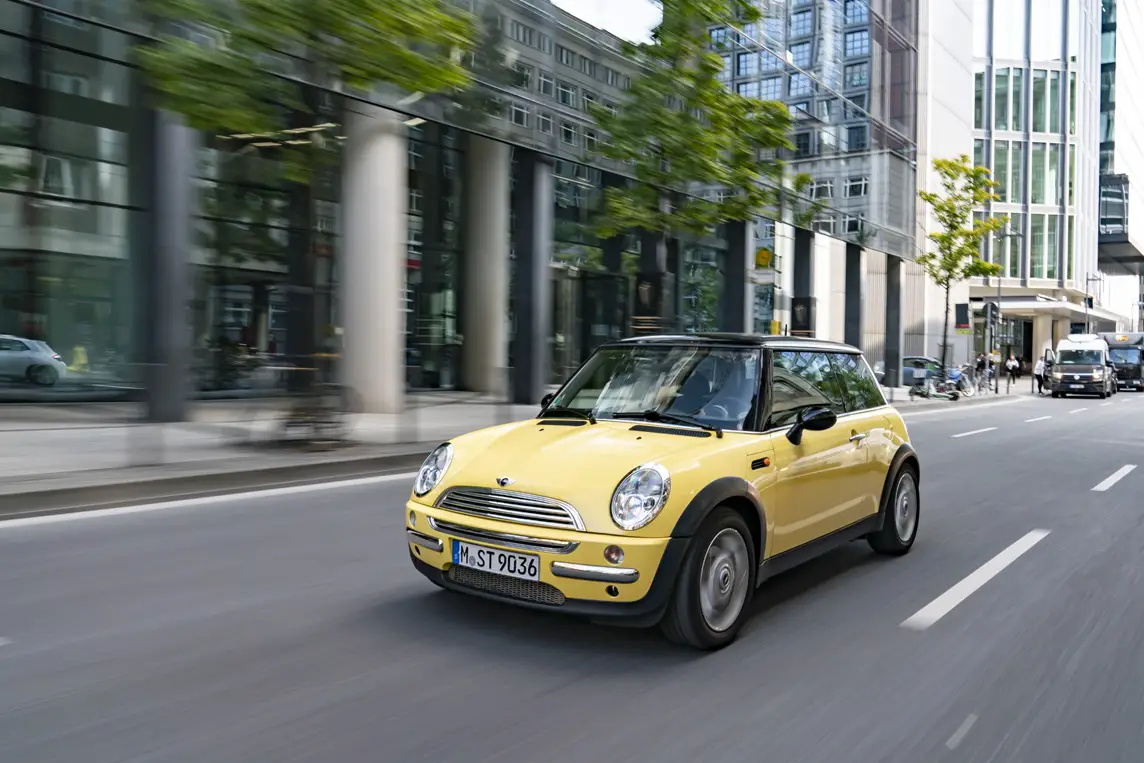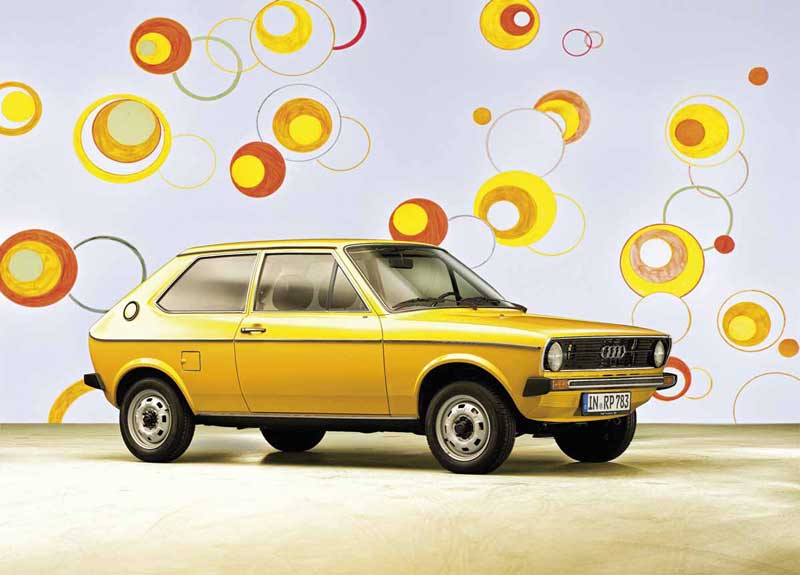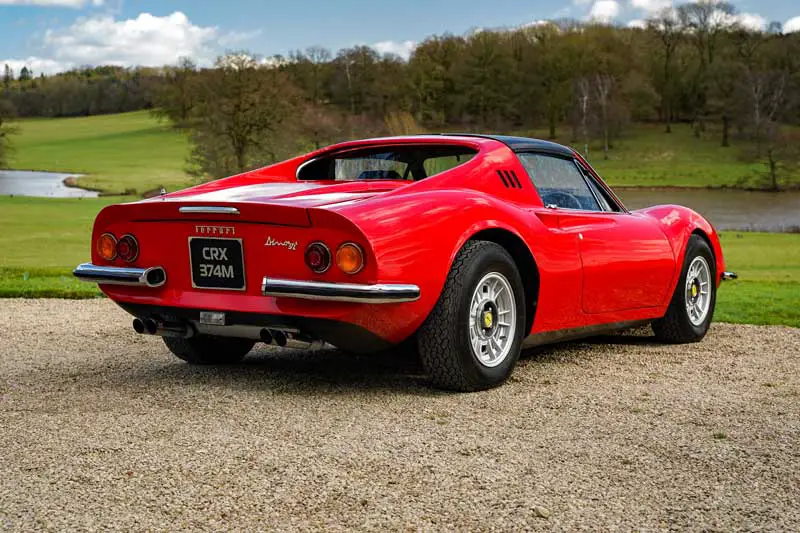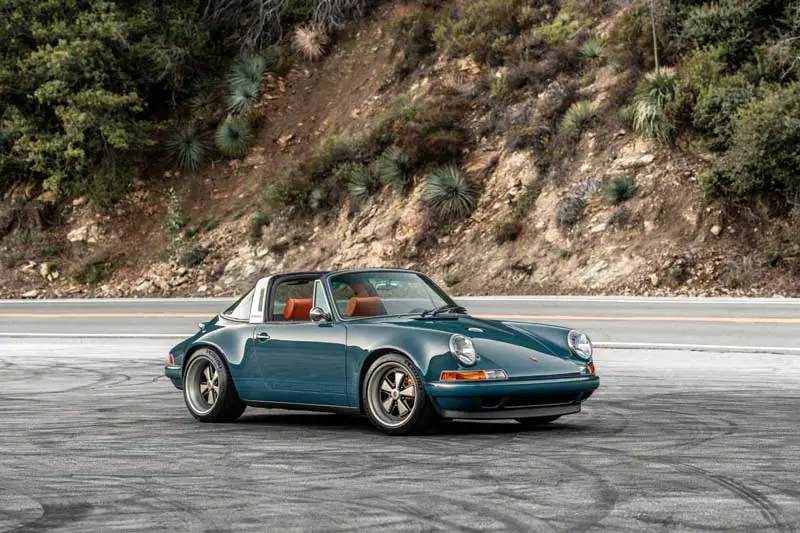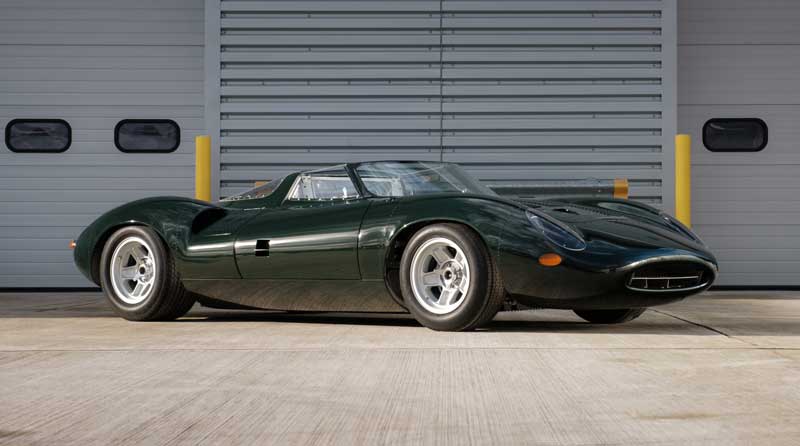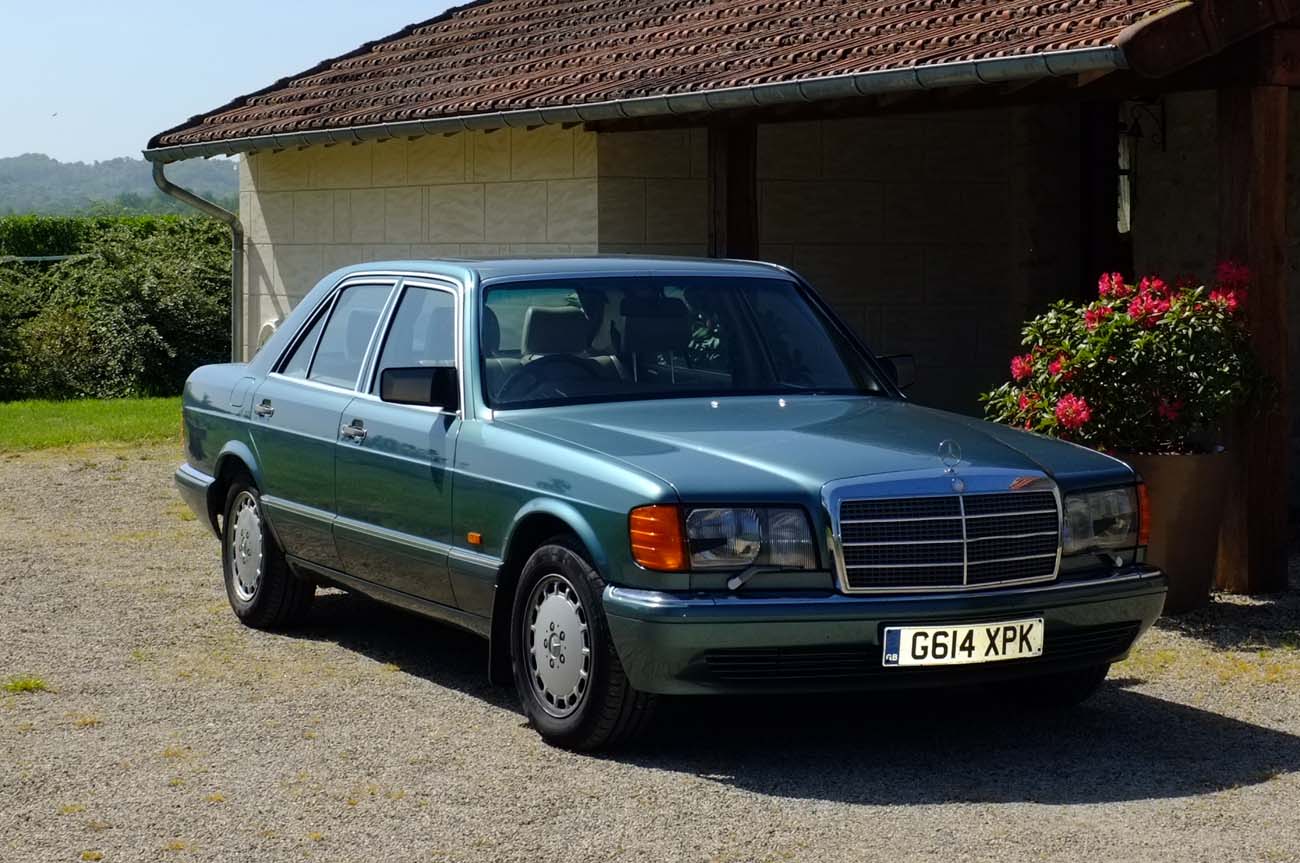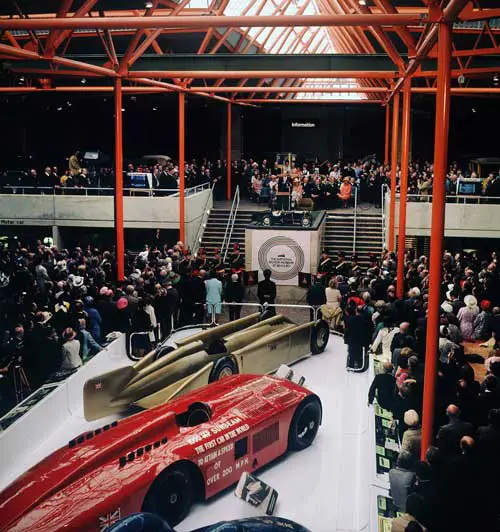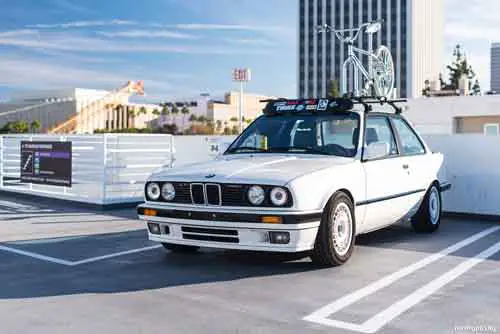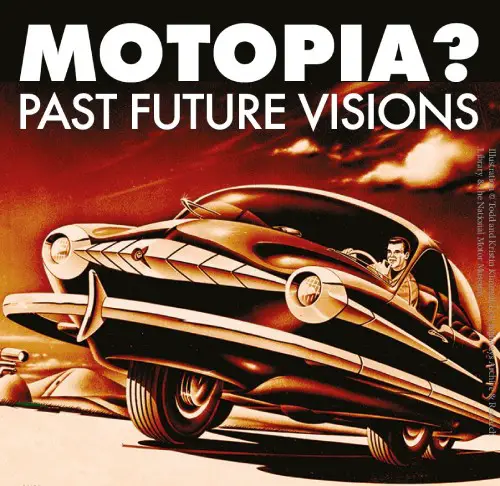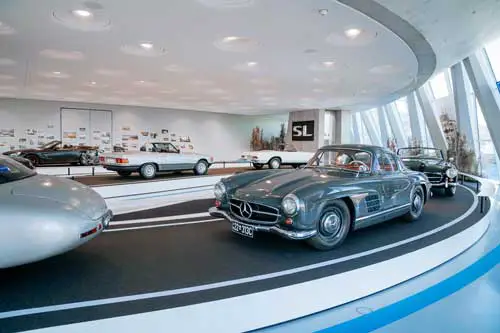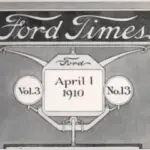
When Does A Car Become A Classic? What Really Matters?
When does a car become a classic? This is a wide ranging question.
Is it just the age, rarity, desirability or the value of a vehicle which guarantees it classic status? Is there a set criteria?
What are the key elements that make one car a classic and not another?
It’s something that I have wondered for quite a while. Most enthusiast will claim to just know, but everyone has a difference of opinion and that doesn’t make for a consensus. How do they do things in different parts of the world, can we get any guidance from there? Or what about the governing bodies, do they set the standards all others should follow? Read on to see if I can shed any light on this.
Table of Contents
How old does a car have to be?
Cars fall into certain categories when given a historic status. The really old cars have categories that have been around for many years.
Veteran cars
Means anything made before World War I.
Vintage cars
Refers to vehicles made before 1930.
Post-vintage cars
Produced between 1930 and 1945.
But this doesn’t cover everything. So what else is out there to help define just when does a car become a classic.
Federation Of Historic Vehicles (FIVA) Definition
The Federation Of Historic Vehicles, FIVA, determines a that a vehicle reaches classic status when it is over 30 years old.
The FIVA was founded in 1966 after an idea from a few organisations that represent the interests of historic vehicle enthusiasts. This global body is there to promote and guide interests of the historic vehicle movement worldwide. This is now present in 71 countries, so there is significant influence and theirs would seem to be the guidance to follow.
You can apply for a FIVA vehicle ID card, which their Technical Commission administers. All historic vehicles are covered, from trucks to cars and motorcycles.
Even better the FIVA have linked with UNSESCO and persuaded the European Commission to recognise that historic vehicles represent a large part of industrial heritage.
It also has a relationship with the FIA, Fédération Internationale de l’Automobile’. This is important as they cover historic racing and cars in motor sports.
United Kingdom
Here in the UK, we like other countries, have a road taxation system on which each car pays to use the roads. This automatically goes to zero as soon as the car hits 40 years old. And that’s 40 years from its manufacture, not its registration, so look out for that.
They also become exempt from needing the MOT or Ministry Of Transport test of roadworthiness. This takes into account that an owner of such a vehicle will look after it and maintain its condition. After all there is quite an investment in owning a classic car even if it doesn’t have a huge value.
UK Benefit In Kind Tax – Company Classic Car
Earlier it was mentioned about road taxation status for age in the UK but that’s not the whole story. HMRC, or Her Majesty’s Revenue and Customs say a car has attained classic status after as little as 15 years. For benefit in kind tax the car also have to have a value in excess of its list price. That is if you buy one with your business. If it’s not old enough then you’ll be taxed on the CO2 figures, which could work out to be expensive.
If it’s over £15,000 in value today, you’ll be taxed on a percentage of the current market value rather than the purchase price. If it’s worth less then you’ll be taxed as a newer car on the CO2 figures. For classics they simplify this as when they set this up manufacturers didn’t produce CO2 data.
The rates for this benefit in kind tax are based on engine size:
0 to 1,400cc 15%
1,401 to 2,000cc 22%
2,001 and more 32%
So, if you had a 3.0 litre engine car that was say, £1,500 new, and now worth £15,000 and not a penny more, then you’ll pay 32% of its purchase price in BIK tax. And depending on what tax bracket you’re in, the relevant percentae of that. So, a 40% taxpayer would pay:
Value today New Price Tax Rate BIK Tax Tax bill
£15,000 £1,500 32% £480 £192
Something like a Triumph Stag or a big 70s Cadillac may would work out quite well. However, go over this value and it’s just not worth it.
Interesting how much lower that age is when they want to tax you, but much higher when they give something away.
Classic Car Capital Gains Tax, CGT
Capital Gains Tax is the tax applied on profits on an asset that you have acquired previously. Some of these assets are free of this tax, these are called wasting assets. Something that has a maximum predicted lifespan of 50 years. Machinery is a typical example as it depreciates and wears out. Cars also fall into this category, even classic or vintage ones. They depreciate in value over their lifetime, although it’s obvious some don’t…
It’s different if it is a business asset though, you’ll get taxed. And don’t buy and sell them too often, you’ll be assumed to be a busines and probably a car dealership.
Classic Car Inheritance Tax, IHT
Here’s where you’re going to find there is a sizable tax. It’s an asset as discussed above, even if it is wasting, it has some value on transference of ownership. The current threshold for IHT is £325,000. That’s an expensive car, but that amount covers all assets received by an individual. This includes cars houses and cash. If this figure is exceeded, then you’ll pay 40% of anything above this.
You could make the car a heritage asset, displaying the car in public and keeping it clean and in good condition. A museum exhibit is an obvious choice. Or donate the car as a gift before death and retain the rights to use the car.
Basically, get some tax planning advice from someone who knows what they are doing.
European Union
In the European union across the 27 member states the definition of a historic vehicles is agreed. Of course, there are differences in the application of this.
Officially this applies to vehicles over 30 years old, but how they gain the status can vary.
Here are some of the countries interpretations of the agreement.
Germany
In Germany there is a system of registering historic cars on an H plate designating its historic status and usage. To get one of these special plates a vehicle must have been registered at least 30 years ago.
There are rules within the official old timer guideline from the Federal Ministry of Transport. For a vehicle to comply with these to get its H registration. The vehicle must be safe, by passing an inspection and meet traffic regulations. And it also must be valuable from a cultural point of view. So, of historic significance and of interest.
This is thought of as an automotive cultural asset. The vehicle must be in largely original condition and must be in good condition.
To get a vehicle approved and gain an H registration an official report according to Paragraph 23 of the Federal Road Traffic Licensing Regulations (StVZO) is required. All vehicles testers can produce this document in Germany. A normal vehicle inspection is also required, which is the same for any other road vehicle, assessed against Transport Ministry regulations. This means an emissions test is required, like it is for any vehicle built after 1969 for petrol and 1977 for diesel.
Is the vehicle in satisfactory condition, are the components and structural elements original? Are there are there any deviations which are acceptable? If everything is in order a pass should be issued and the H registration can then be obtained the vehicle licensing authority. An entry is made in the registration document that the vehicle is officially recognised as an old timer.
This means you can take the car or motorcycle can be taken into low emission zones. Any motor vehicle tax is lower, and insurance is also often cheaper. So, there are benefits to doing it.
The cost of the assessment is between €80 and €200 (Euros), depending on the type of vehicle. Registration at the road traffic licensing department costs around €40. The tax for old timers is currently fixed at €191 per year, motorcycles costing €46.
Deviations from standard specification are quite rigidly enforced. Anything done within the first 10 years of the vehicle’s life is accepted. Otherwise, consumables, like brake pads, tyres and some other components can be replaced with modern alternatives. Importantly all modifications that could have been done within the first ten years are permitted. If the parts were available then, it would have been possible to do. Dropping that RS2000 motor in your 1.1 Mk2 Escort would be ok then. No RB32 engine conversions I’m afraid. They would expect to see you have uprated the brakes to match or they probably won’t let you out in the car, but that’s common sense.
This also means no modern paints, putting an internet address or an Instagram logo on it as they weren’t around then. Today’s vehicles will be eligible for that in time.
There is an alternative registration, the 07 plate. This is a little different as it is a limited permit. An old timer report is needed, but it is not required to go every two years for its inspection. You can only use the vehicle for limited purposes, like test drives, servicing and adjustments. You can’t even drive to a petrol station with one. It can be moved from vehicle to vehicle and used to go to shows and special events. A bit like a trade plate in the UK. Handy if you have a fleet.
There is a class for newer vehicles, unsurprisingly called young timer. Vehicles 20 years old that are considered quite rare and owned by enthusiasts. Again, these are well cared for and maintained.
France
This is very similar to Germany, the system being the Collector’s vehicle registration card. Carte grise collection, CGC.
If you have a vehicle that is over 30 years old, you can apply for a collection registration card. According to the French highway code, R311-1 paragraph 6.3; It is a vehicle whose first registration is at least 30 years old and whose production is stopped. It must be in its historic condition. In the event of restoration, the technical characteristics of its main components must be preserved.
So that’s very much in line with Germany regarding historic status. There are advantages of registering your classic car on a CGC though.
You can have old style black license plates, any cars with a collector’s license are considered to be heritage. The law allows them to use these plates showing which year they are from. If your vehicle is over 30 years old this does not apply unless you have gone through the CGC registration process.
You also don’t need to do the technical inspection, contrôle technique, every two years. Once every five has been ok since 2017. This applies to motorcycles as well as cars. Like anywhere with a roadworthiness inspection, you are responsible for maintaining the vehicle to that standard all the time.
The other good news is there is no traffic restriction within French territory. Like Germany you can enter any restricted traffic or emissions zones.
Lastly when importing a foreign vehicle, it becomes much easier when over 30. Not having to present a certificate of conformity is a huge advantage.
Ireland
This Irish Veteran and Vintage car club gives the following criteria:
Pre-1905, Antique.
1905-1918, Veteran.
1919-1930, Vintage.
1931-1945, Post-Vintage.
1946-1991, Classic.
From 2014, the annual tax rates for private cars are based on its emissions on a sliding scale. This is as low as €120 for a zero rated car. If it’s over 225 g/km of CO2 then it’s €2,350 for the year. Motorcycles are between €35 and €88.
The good news is that if your car is over 30 years old it will qualify for a reduced rate with vintage tax status. This is €26 or €56 per year for all other vehicles. Not so bad.
Netherlands
There is a different interpretation of the classic or historic status in the Netherlands and is a little bit more like the UK. Classic status is gained above 40 years old. Except the annual inspection.
The Periodic Motor Vehicle Test, APK, in the Netherlands is similar to other roadworthiness tests. However, you are exempt from this if your vehicle is over 50 years old. This came into force on 1 January 2021. Owners of all vehicles over the age of 50 will receive an APK exemption letter. No more annual reminders for these owners. There are exceptions to this rule, buses, taxis and anything used as public transport.
Paying road tax, BMP in the Netherlands, can be very expensive. Even as much as €5,000 a year. For classic vehicles there are discounts by applying for the old timer status like in Germany. If you have a car or vehicle built before 1988 then you may qualify for the transition status. If it runs on petrol. If it doesn’t you’ll have to wait until it’s over 40.
This transition period, from those built before 1988 means there are restrictions. You cannot use your vehicle in the months of January, February and December. You pay 25% of the annual tax charges and if your vehicle is off the road you don’t get a refund. The good news is the maximum charge is €129. This applies from 1 January 2021 like the APK.
Unlike the UK this tax is not free but having looked at the regular charges for car ownership there it is a lot lower.
USA
Things in the US are much clearer and simpler. If a little bit short on inclusivity.
The definition of a classic car comes from the Classic Car Club of America, which says that classic cars are “fine or unusual motor cars that were built between and including the years 1915 to 1948”.
Vintage cars are those having been produced between 1919 and 1930. But this still doesn’t really cover the greatest automotive decade in U.S history. The 1950s. or the 60s. I rather like the 70s, but we won’t talk about that…
The Antique Automobile Club of America, AACA, have a huge list of categories covering vehicles they cater for in their membership. This year they allow in those up to 1996, as part of a rolling 25 year age limit. That means they can take part in the club shows too.
U.S. insurance companies have what they call a collector’s car category. This includes any car manufactured in 1980 or later. Not everything will qualify of course, but insurance discounts can be had. So they do cater for a wide range, but there seems to be more of a clear definition across European nations. I’ll keep looking as there is bound to be more information out there.
Taxation, or registration of vehicles isn’t a good guide for the USA as each state can set its own rates.
Cuba
Cuba has long been known for its classic cars, especially those from the 1950s in America. This is because Fidel Castro banned imports of foreign vehicles from 1959. This was lifted in 2013, but without any vehicle production of their own these cars either sat around in a non-working state or were lashed together with imported parts from Europe and the U.S.S.R.
Cars have been imported from China to be used as taxis, police cars and rentals since 2009. In 2011 the Cuban government legalized the purchase and sale of used post-1959 autos and in December 2013, Cubans could buy new cars from state-run dealerships.
There is quite the classic car scene in Cuba with the vehicles having been recognised and significant and important. What there is officially I can’t say. But I want to go and find out.
Classic Insurance
Classic cars around the world are entitled to discounted road taxes, or registration, but also for insurance.
In the UK classic specialists provide insurance for classic cars and motorcycles based on certain criteria. You can get specialist cover for exotic cars straight away; most regular insurers aren’t keen on them anyway. But if you have a cherished car over 10 years old that’s not your main vehicle then you’re in luck. Get to 15 years old and you’ll easily find classic car cover. Thirty plus and the rates get even lower. But it does help if you’re over 25, but that doesn’t mean you won’t get it. And if you have another main vehicle and for some cars you’ll need a garage. But that’s sensible anyway.
You won’t be driving it as much as a regular daily vehicle. So limited mileages will often apply. I have had some insurance over the years that gives unlimited mileage on older cars. But let’s face it, the amount of people who are going to drive more than 5,000 miles in a forty or fifty year old car is pretty small.
The benefits to all this are seriously low rates. Think in the order of £100 or so for that Morris Minor, 2CV or even MGB you’ve had your eye on. That Triumph Stag mentioned earlier is likely to be in the same price bracket too. If you’re younger, you’ll pay more. But it won’t be anything like your modern.
Another key element is an agreed value, so no market estimates should the worst happen. Try and replace a car that hasn’t been made for decades. Combine that with salvage retention and you can repair your car and keep it.
But What Makes A Car A Classic?
Having researched some counties, and there’s more to go I’m not sure there is any clear definition. Certainly, as far as taxation is considered.
There’s more to earning classic status than age – cars don’t just become one as soon as they hit 40, 30, or even 20. Some are destined for that status they enter the realm that much sooner. Anything produced in limited volume usually gets there. Think of the Bugatti Veyron and whilst 2005 doesn’t seem that long ago in vehicle years it got that status very quickly. Same as the Ferrari Enzo, probably considered a classic from 10.
It reminds me of an old copy of Practical Classics magazine. It was a few years back. An early edition with an MGB on the cover that at the time was 9 years old. It’s purely subjective.
Desirability, something different, rarity. They all count. If the car was universally hated, then there won’t be too many fans that care about their survival. There are always some, and that’s a good thing. Think of some of the more utilitarian examples of transport. The early 90s Nissan Sunny. It’s a classic for sure, but many people won’t care. When did you last see one? After the onslaught of technology in a modern car the pleasure of using something simple like a Sunny is to be revered. Likely to be very rare, in the UK at least.
How much demand there is can be a good guide. If it was desirable when new, then people are likely to want it now. This especially applies to those cars you coveted when younger. Think of the thing you had on the wall in your bedroom and you get the idea. But this can create demand when you’re old enough and have the money.
That can create another problem. As things get more valuable another kind of interest can occur, investment or speculation. This drives prices up further and may create even more demand. But is this demand for the car or the asset and what it might be worth.
Tastes change and this demand may be fleeting. Ok, the really valuable things like the Ferrari 250 GTO will probably always be sought after. But other kinds of cars that people might use. have a look at the generation older than you, or the one older than them. The values of those cars are in decline as the interest fades. Eventually very few people will grow up wanting your 1980s car, reducing the demand and potentially leading to rarity.
But rarity alone won’t do it. What about cars produced in huge volumes. The 57 Chevy, in 150, 210 and Bel Air trim have been classics for many years. And they made a lot of them.
Here’s a rule of thumb. If it’s exotic, 15 years or more is a definite classic. If it’s more ordinary I’d say 25 years, perhaps even 20. Buy why should there be difference just because the car was made in bigger volumes, like a Vauxhall Cavalier Mk3, or Opel Vectra A if you prefer.
Age really does seem to be a key factor, if a car has survived then surely it does deserve to become a classic. But there isn’t really a deninitive answer to the question, when does a car become a classic?
Maybe FIVA is right, but whatever you do, preserve them well until they get to 30, or there won’t be any.
Some Examples Of Cars That Have Now Attained Classic Status
It’s not a difinitive list, but these have surely made it now. Whether everyone agrees with all of them or not remains to be seen.
What do you think should be a classic?
Audi quattro
The original Audi quattro first appeared over 40 years ago in 1980. (40 years of the Audi quattro). The four wheel drive coupe was revolutionary when it was launched. Ok, it wasn’t the first all-wheel drive car, but it was a volume production car and that counts. But it took the rally world by storm.
Fiat Panda
Another car that hit 40 in 2020. (Fiat Panda, the smart solution is 40 years old). This brilliant little car was hugely popular transport, if a little rusty over time. Find a good one and it will make for an unusual sight on today’s roads.
Ford Escort Mk3
It had to come at some point, but the Escort has made it like the Panda. (Ford Escort Mk3, 40 years ago). The simplicity of the car is part of the appeal. The fast ones are valuable now too. Get a basic one and appreciate motoring at its most minimalist.
Porsche Boxster
The earliest Boxster is now over 25 years old. (The 1993 concept that made it to production). I remember it appearing in a computer game, it was that much of a big deal. The earliest cars aren’t that expensive and whilst they don’t look too different to the current cars, they vehicle underneath is all analogue. Unless you get a PDK gearbox, but that’s ok.
It would be even better if they’d built the prototype as it was.
BMW Mini R50
The Mini from 2001 is now 20 years old. (Mini, for 20 years it has been the premium small car of choice). Another definite classic. It was always destined to be and a relatively simple way to get into the older car scene without getting something that might feel totally antiquated. And they are really good. Those in the USA might not agree however, I don’t think theirs were built as well.

